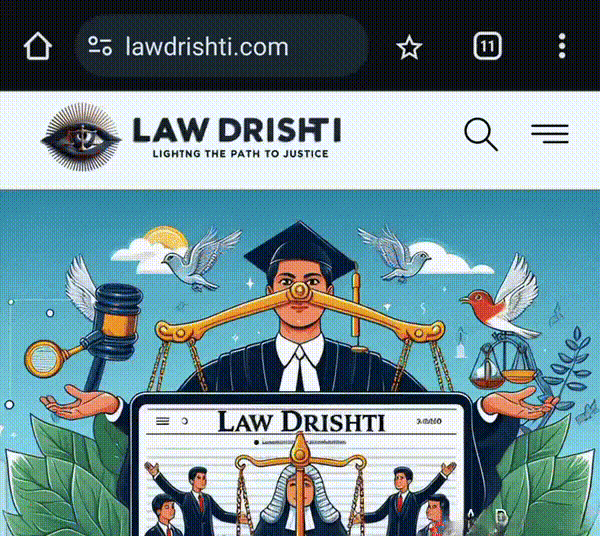Introduction
President Rule in Manipur has been imposed by the Central Government under Article 356 of the Indian Constitution following the resignation of Chief Minister N. Biren Singh. The state assembly has been suspended, and the governance has been taken over by the Centre. However, before understanding the reasons behind this imposition, it is essential to comprehend what President’s Rule entails and the constitutional provisions and procedures under which it can be applied in a state. Let us delve deeper into the layers of this significant constitutional mechanism.
Let us move forward with our article for uncovering the layers of this rule.
President Rule
There are moments when a nation is unexpectedly overwhelmed by events or forces that pose a serious threat to its security and the lives of its citizens. In such critical situations, it may become necessary to temporarily suspend individual liberties to effectively address the dangers that are faced by the country.
Emergencies create a genuine dilemma for democratic governments. This is because they must balance their fundamental duty to safeguard the integrity of the State and uphold equal yet vital responsibility to protect the human rights of citizens and others within their jurisdiction. The State is compelled to choose between conflicting values; often sacrificing one in favour of the other.
This is the underlying justification for the inclusion of emergency provisions in many national Constitutions; allowing for the temporary suspension of fundamental rights when necessary.
Emergency provision is a unique feature of the Indian Constitution that allows the Centre to assume wide powers so as to handle special situations.
During a state of emergency, the central government is empowered to assume complete legislative and executive authority over any state. It also has the power to restrict or suspend the fundamental freedoms of citizens.
The presence of such emergency provisions in the Constitution is a major reason why many scholars hesitate to classify the Indian Constitution as entirely federal.
Emergency provisions
Emergency provision falls within Article 352 to Article 360 of the Indian Constitution. Let us study those.
- National emergency (Article 352)
- State emergency (Article 356)
- Financial emergency (Article 360)
Let us study in depth about Article 356
Article 356
Under Article 356, the Union Government is constitutionally obligated to ensure that the governance of every state is conducted in accordance with the provisions of the Constitution. Thus Article 356 empowers the President of India to intervene when this obligation is not being met.
Under this Article, the President may proclaim to impose President’s Rule in a state if:
- Based on the Governor’s report or any other source of information, he is satisfied that the state government cannot function under constitutional provisions.
This situation is referred to as a “failure of constitutional machinery”, and results in what is famously known as President’s Rule.
Presidents Rule Implications
Now the question arises of what happens when the President’s Rule is imposed. There are major 3 controls that turn the federal structure into a strong unitary set:
- Executive Authority: The President may assume all or any of the functions of the state government, excluding those of the High Court.
- Legislative Authority: The powers of the state legislature may be exercised by or under the authority of the Parliament.
- Administrative Provisions: The President may make any other provisions necessary or desirable to implement the objectives of the proclamation.
There are some limitations to these powers as well or else it can harm the structure of our constitution.
Here, the President cannot assume the powers of the High Court nor suspend any constitutional provisions related to it which means the control over judiciary which is the cornerstone of democracy is absent.
The Procedure of its Imposition
The procedure to adopt this rule is not as simple as a walk in the park. It requires serious deliberation of the circumstances of the state. Like a National Emergency; a proclamation under Article 356 must be presented before both Houses of Parliament for approval.
Let us look at how it is achieved.
Approval Timeline
The Approval Timeline is two months if the Lok Sabha is dissolved during this period. Also, if the Rajya Sabha has approved the proclamation, then it remains valid for 30 days from the first sitting of the newly elected Lok Sabha, unless it is approved earlier by the Lok Sabha.
Once approved, the proclamation remains in effect for six months and can be extended for a further six months at a time but it cannot exceed beyond three years.
The 44th Amendment placed restrictions on extending the President’s Rule beyond one year, ensuring that such extensions are not misused and that constitutional governance is restored as early as possible.
Since the adoption of the Constitution in 1950, the power under Article 356 has been frequently invoked, especially in states such as Uttar Pradesh, Kerala, and Punjab.
There are many instances when the President’s Rule was imposed on political grounds to overturn the state governments formed by opposition parties.
The 42nd Amendment Act of 1976 expanded the scope of central control which expanded nearly sixty provisions of the Constitution and exemplified concerns over misuse.
As a result, there has been a growing demand among legal scholars and political thinkers to either delete this Article or introduce stricter safeguards to prevent its arbitrary or politically motivated use.
Supreme Court’s view regarding the President’s rule
The Supreme Court for the first time in S.R Bommai v. Union of India 1994, held that the Proclamation under Article 356 can be subject to judicial review. The judges here have the power to examine the validity of the grounds on which the Proclamation of Emergency is based.
In the Sarbananda Sonowal case of 2005, the scope of Article 355 was widened which enabled the Union Government to take wider actions to uphold state governance during times of crisis.
In the Maneka Gandhi case, the due procedure of law and the procedure established by law were mentioned. It was said that it must be followed to prevent corruption and misuse of power. It should be used as a conditional power and as a last resort with due care.
The Sarkaria Commission, in its report, believes that this extraordinary power given by the constitution must be used as a democratic weapon to deal with grave emergencies and not as routine political tools.
The Supreme Court further in the case of Minerva Mills and Others reaffirmed its authority to assess the legality of an emergency proclamation. It is observed that it should not hesitate to perform its constitutional duty merely because it involves considering political evaluations.
Need for the Presidential Rule in Manipur
Manipur state comprises of valley and hill area. The valley which constitutes about 10% of the landmass is dominated by non-tribal Meitei(Kuki) who account for more than 64% of the population. The hill area which constitutes about 90% of the landmass is dominated by the tribal Meitei who accounts for 35% of population.
The communal clashes in Manipur began with fire after the Manipur High Court’s decision. The decision to provide Schedule Tribe status to the non-Meitei community.
The tensions arose when Kuki began protesting against the demand for Meitei to be included in the ST list as they already have a strong influence over the government and society, allowing them to buy lands and settle in Kuki’s predominant areas.
Rape and sexual harassment have been used as instruments of grave violence in the state which is spiralling into more revenge attacks. Thus, the centre believes that the imposition of the President’s rule will lead to a neutral administration as N.Biren Singh also belonged to the Meitei community.
This rule will remove the alleged ethnic conflicts protecting both the affected communities. The central forces deployed by the Governor can help control the horrors ending the internal dispute. It will further ensure the rehabilitation of around 60,000 displaced people in camps for over 2 months.
Criticism of President’s Rule
The way the President’s Rule was imposed in different states has raised some grave concerns. Sometimes the situation is such that it requires this rule but at other times, the President’s Rule was imposed purely on political rivalry to just dislodge the government formed by a party different from the one at the Centre, even if that party secured a majority of votes during the time of election.
Suspending these assemblies and not giving a chance to other political parties to form governments in states is hampering the democratic structure of our nation and this is all because of the partisan nature of the Union Government, for which Article 356 has been clearly misused.
Thus, the misuse of Article 356 has become a hot potato in Indian Constitutional debates sparking widespread criticism and calls for reform.
Despite all the safeguards provided by the 44th Amendment Act, this provision has been misused by the Union Government. That is why there is a growing demand either to do away with this article or to draw a line to prevent its misuse through constitutional safeguards.
Conclusion
In view of the above facts, we can say that the Presidential rule in Manipur aims to restore stability and maintain law and order but the escalating violence, the past experiences tell us that applying this rule is like walking on eggshells as excessive use can lead to destruction of federalism and political misuse.
Mahi Srivastava ( Vivekanand Institute of Professional Studies – 1st year of BALLB )





